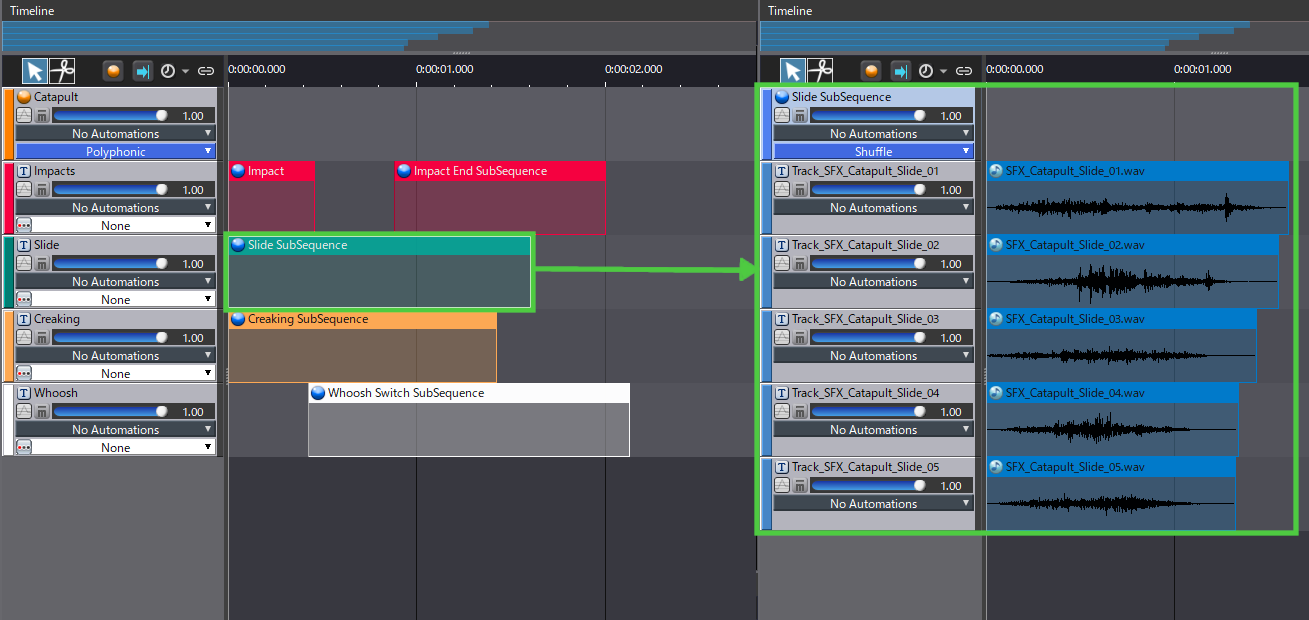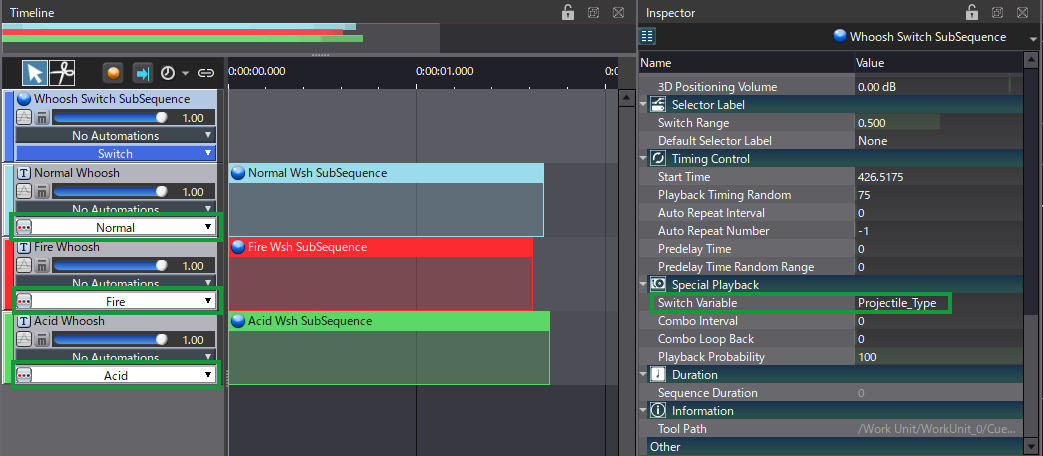Designing a Catapult
Siege machines are an integral part of medieval or fantasy games. In this post, we will see how to design and implement the sound of a catapult in Atom Craft.
Assets Preparation
Our goal is to be able to produce many variations of the catapult sound, while choosing between different types of projectiles.
To achieve this, the sound is separated into different layers (each containing several variations): the initial impact, the final impact, the creaking, the sliding, and the whoosh.
The whoosh itself is then divided into three types to reflect the kind of projectile: normal, fire, and acid.
In our example, we created five variations for each layer, which should be enough to generate a wide variety of sounds.
Implementation
Once your assets ready, you can import them in the Material Tree in Atom Craft and start the implementation:
- Create a new Polyphonic Cue.
- In this Cue, create four tracks: Impacts, Slide, Creaking, and Whoosh.
- Create two Sub Sequences of type Shuffle in the Impact track, and one Sub Sequence (also of the Shuffle type) in the Slide and Creaking tracks.
- Place the Initial Impact, Slide and Creaking Sub Sequences at the start of the Cue, and the Final Impact at around 900ms.
- Drag and drop the corresponding Materials into the Sub Sequences in the Work Units Tree to automatically create the tracks that will be played in shuffle.
- Finally, for each Sub Sequence, change the Pitch Random Range (200 cents max) and the Playback Timing Random properties (between 50 and 200ms) to add more variation.

For the Whoosh layer, a Sub Sequence of type Switch is used to allow for the selection of the projectile’s type.
- In the Project Tree, create a new Selector named Projectile_Type, and add three Selector Labels: Normal, Fire, and Acid.
- On the Whoosh track of the Cue, create a Sub Sequence of type Switch starting at about 400ms.
- Open the Switch Sub Sequence and set the Switch Variable property to the Projectile_Type selector.
- Then, create three tracks in the Sub Sequence (Normal, Fire, Acid) and assign the corresponding Selector Label for each track.

- Finally, on each track of the Switch Sub Sequence, create a Sub Sequence of type Shuffle, and drag and drop the corresponding materials, allowing for several variations by type of projectile.
With all that done, if you play the Cue in the Session window you will be able to change the Selector and switch the sound to a different type of projectile.
As you can see in the downloadable project below, we created a Cue with a deep hierarchy, but combined with timing and pitch randomization it can generate a wide variety of sounds.




 AtomCraft_Project_Catapult.zip
AtomCraft_Project_Catapult.zip